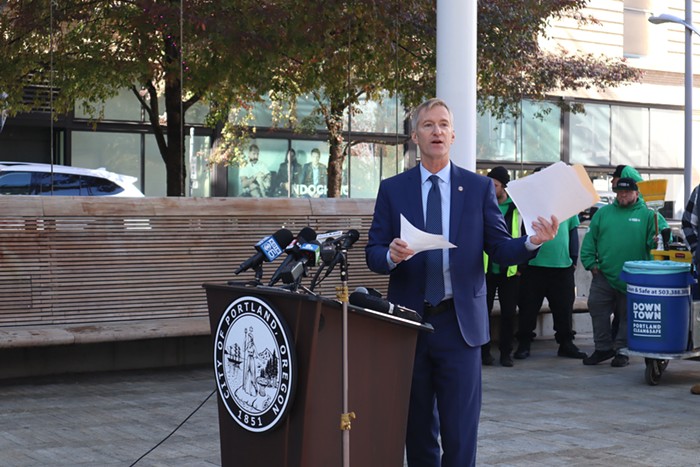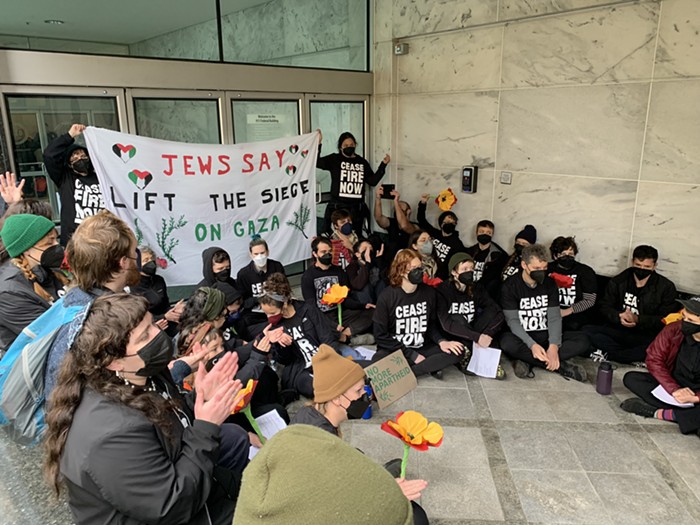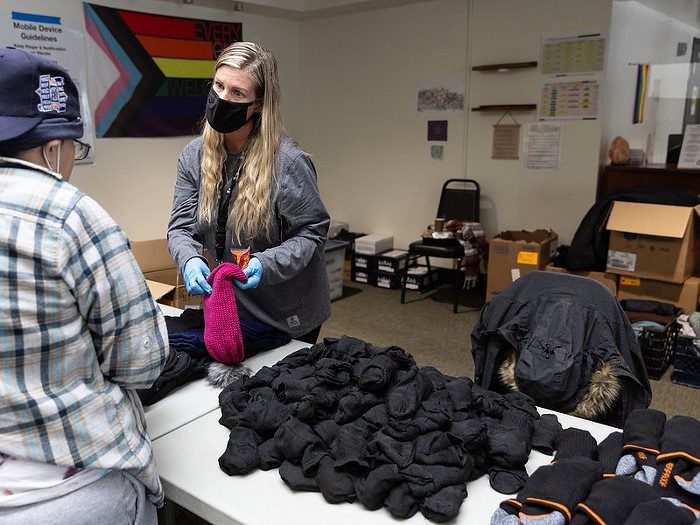
Gov. Kate Brown's office announced Pedersen's decision in a press release this afternoon, and says Pedersen is "citing the need to tend to immediate health concerns." The release credits Pedersen with achievements in water pollution policy—including work on the badly polluted Portland Harbor—and for pushing clean fuels in Oregon.
It makes no mention of what's been Pedersen's gravest concern for the last month: getting in front of a swirling controversy in which officials such as Brown, Portland Mayor Charlie Hales and Multnomah County Chair Deborah Kafoury have accused his agency of lax enforcement on two Portland glass factories. As first reported by the Mercury, Bullseye Glass and Uroboros Gas have long used heavy metals to color their products, but neither uses basic pollution controls on their flues.
In monitoring that began last year, DEQ officials turned up alarming levels of the carcinogens Cadmium and Arsenic in the air around Bullseye, and have deteced elevated cadmium levels around Uroboros as well. The glass factories have suspended use of cadmium, chromium, and—in Bullseye's case—arsenic (Uroboros wasn't using arsenic).
The DEQ has said repeatedly it was caught completely off-guard by the pollution, but records show there have been complaints and reports about Bullseye for decades. As we reported last week, there's also concern DEQ's far too friendly with the industries it's supposed to police. One senior air quality official, for instance, boasted of vacationing with an attorney for industrial polluters.
Faith in DEQ has diminished enough that Hales and Kafoury have mulled setting up a local air quality authority to enforce pollution regulations.
Update, 5:04 pm: Here's Pedersen's resignation letter. He was paid $148,572 a year. The governor's office say Brown didn't ask for Pedersen's resignation, and that there was no discussion about his decision being based in the concerns over Portland's air.

Hit the jump for Brown's press release:
(Salem, OR) — Governor Kate Brown announced today that Dick Pedersen, Director of the Oregon Department of Environmental Quality (DEQ), is stepping down effective mid-March, citing the need to tend to immediate health concerns.
“Over his many years in state government, Dick has provided steady and dedicated leadership,” Governor Brown said. “I am grateful for his service to the people of Oregon, and I will miss him as a trusted colleague and friend.”
As agency director, Pedersen is credited with several innovative policy achievements, such as establishing the Oregon Water Quality Trading Program to address water pollution, one of the first such programs in the country. Pedersen also lead efforts to address concerns of tribal governments over pollution of state waterways. He also oversaw work to assure that further pollution of Portland Harbor be ended in advance of federal clean-up efforts for the Portland Harbor Superfund Site. Pedersen work was instrumental in developing rules to reduce Oregon’s transportation-related carbon footprint through the use of cleaner fuels such as lower-carbon ethanol and biodiesel, electricity, natural gas, biogas, and propane.
DEQ Deputy Director Joni Hammond will step in as interim director until a permanent successor can be named.
MORE COVERAGE:
State Finds Alarmingly High Arsenic, Cadmium Levels Near Two SE Portland Schools
Bullseye Glass Has Suspended Use of Arsenic and Cadmium Because of Air Quality Concerns
Portland Public Schools Is Ordering Air Tests Because of Arsenic, Cadmium Concerns: "We Need A Public Meeting"
Soil Near Bullseye Glass Contains Arsenic and Cadmium—And Other Things Officials Told Parents Thursday
Essential Pollution Controls Lacking at Two Glass Plants Blamed For Cadmium Emissions



















